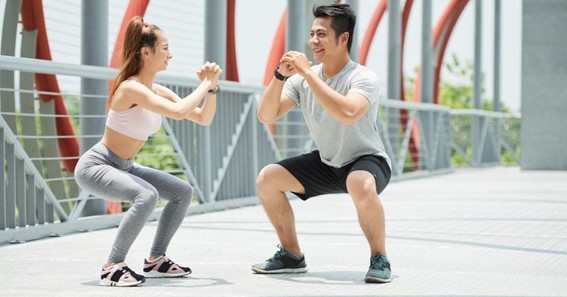Are you curious to know what is the asian squat? You have come to the right place as I am going to tell you everything about the asian squat in a very simple explanation. Without further discussion let’s begin to know what is the asian squat?
Cultural practices often shape our daily lives, including the way we sit and interact with our surroundings. One such sitting posture that has gained attention is the Asian squat. Commonly seen in many Asian countries, this unique sitting position offers comfort, flexibility, and a glimpse into cultural traditions. In this blog post, we will delve into what the Asian squat is, its benefits, cultural significance, and its growing popularity around the world.
What Is The Asian Squat?
The Asian squat, also known as the Asian deep squat, is a sitting position where individuals squat down with their feet flat on the ground and their buttocks close to or touching their heels. The posture involves a deep flexion of the hips, knees, and ankles, allowing individuals to balance their body weight while maintaining stability in this position.
Benefits Of The Asian Squat:
- Flexibility and Range of Motion: The Asian squat requires a high degree of flexibility in the hips, knees, and ankles. Regular practice of this posture can help improve joint mobility, increase flexibility, and enhance overall range of motion in these areas.
- Core Strength and Balance: Maintaining balance in the Asian squat position engages the core muscles, including the abdominal and lower back muscles. Over time, this can help strengthen the core, improve stability, and enhance posture.
- Resting and Relaxation: The Asian squat offers a comfortable resting position for many individuals. It allows the body to rest and relax without the need for external support, such as chairs or benches. This can be particularly beneficial during activities that involve long periods of standing or walking.
Cultural Significance:
The Asian squat holds cultural significance in many Asian countries, where it is a common and natural sitting posture. In these cultures, squatting is often associated with everyday activities such as eating, socializing, or waiting. It is deeply ingrained in traditional customs, reflecting a relaxed and communal lifestyle.
Practical Applications:
- Street Food and Eating: In many Asian countries, street food stalls and outdoor eateries often have low tables or mats where people sit in the Asian squat position while enjoying their meals. This allows for a more intimate and casual dining experience.
- Socializing and Gathering: The Asian squat is often used as a casual sitting position during social gatherings, where friends or family members can sit on the floor and engage in conversations, games, or storytelling.
The Growing Popularity:
In recent years, the Asian squat has gained popularity beyond its cultural roots. People from different parts of the world have embraced this sitting posture due to its perceived health benefits, natural alignment of the body, and its connection to cultural diversity. It has become a symbol of inclusivity and appreciation for different cultural practices.
Conclusion:
The Asian squat is more than just a sitting position; it represents cultural traditions, relaxation, and a unique way of engaging with one’s surroundings. From its benefits in flexibility and core strength to its cultural significance in many Asian countries, the Asian squat offers a fresh perspective on how we sit and interact with our environment. As it gains recognition and popularity around the world, this cultural sitting posture serves as a reminder of the diversity and richness of traditions that shape our daily lives.
To Figure Out Such Kind Things On Shortestt
FAQ
What Is The Reason For Asian Squat?
The Asian Squat provides a better balance than the western one as the center of gravity is directly on the feet. Also, less pressure is placed on the knees and patella tendons making it less likely to injure your knee.
What is the difference between Asian squat and normal squat?
Differences Between The Asian Squat Vs Western Squat
The main difference between the Asian squat and the Western squat is the squat depth achieved. The Asian squat will involve being able to squat deep enough to allow the hamstrings to touch the calf muscles.
Why Can’t Some People Do The Asian Squat?
The reason for this is that it requires a lot of mobility and flexibility on the ankles and balance. Most people cannot perform the Asian squat easily or without discomfort because they lack or have lost these qualities over time.
Why Can’t I Squat With My Heels On The Ground?
Having your heels off the ground puts more strain on joints and knees and increases the chances of hurting your lower back. For a quick fix, curl your toes upward when squatting to force you to place your weight in your heels, or place weight plates under the heels.
I Have Covered All The Following Queries And Topics In The Above Article
What Is The Asian Squat Good For
What Is The Science Behind The Asian Squat
What Is The Asian Squat Called
What Is The Asian Squat Social Club
What Is The Asian Squat
Can everyone do the Asian squat
What is the Asian squat good for
